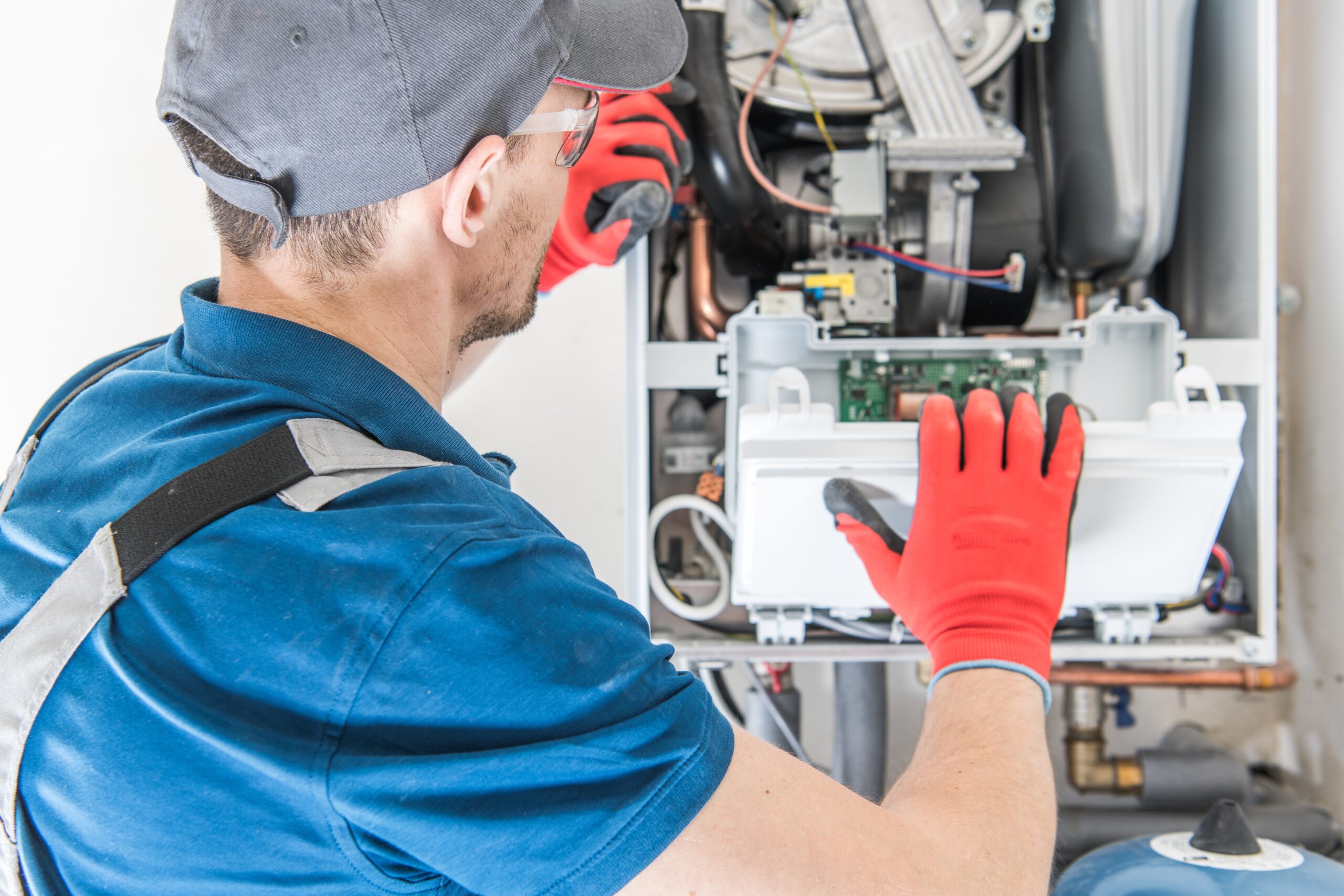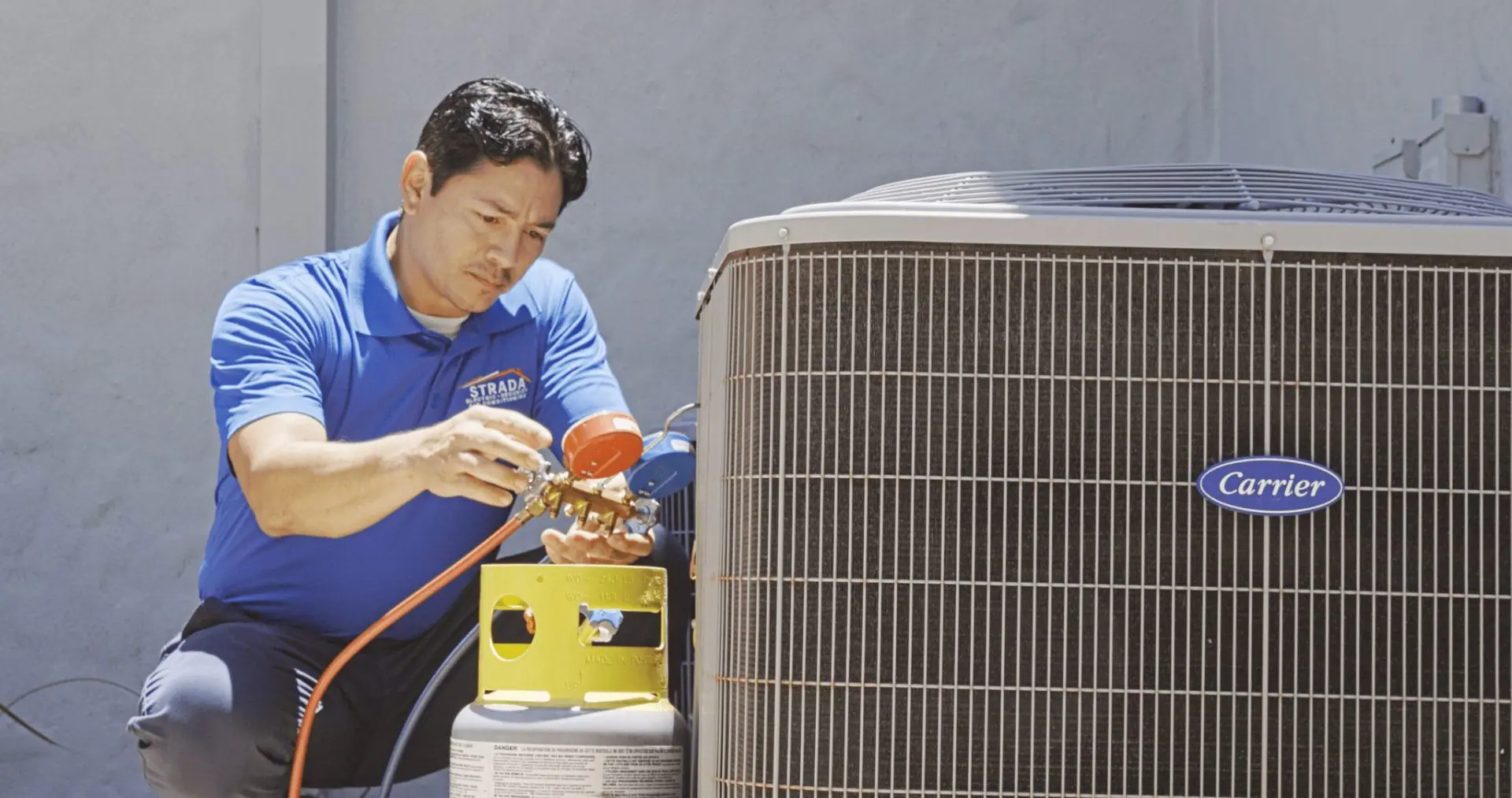How a Heatpump and Heater Collaborate to Optimize Your Home's Home heating Effectiveness
Understanding just how a warm pump and furnace collaborate is important for homeowners looking for effective home heating options. Each system has its strengths, giving a balanced approach to home convenience. The heat pump masters moderate temperature levels, while the furnace supplies rapid heat during severe cold. This synergy not only minimizes energy costs however also boosts the life-span of both home appliances. What elements affect this collaboration, and just how can property owners optimize their benefits?
Comprehending Warmth Pumps: How They Function
Several people may be unfamiliar with their internal workings, warmth pumps play a necessary role in modern home heating systems. These devices run by transferring warm from one place to an additional, utilizing the concepts of thermodynamics. In cooler months, a heatpump extracts warm from the outdoors air, ground, or water, and transfers it inside to warm up the living space. On the other hand, throughout warmer months, it can turn around the procedure, serving as an a/c by expelling heat from inside to the outside.Heat pumps include an evaporator, compressor, condenser, and growth shutoff. The refrigerant within the system takes in heat as it vaporizes at reduced temperature levels and stress. The compressor then boosts the pressure and temperature of the refrigerant, allowing it to release warmth as it condenses. This reliable procedure can greatly reduce power intake contrasted to traditional heating techniques, making heatpump a sustainable choice for environment control in homes.
The Duty of Heating Systems in Home Heating
Heating systems play a vital function in home heating by offering a trustworthy resource of heat throughout the chillier months. They operate by producing warm with combustion or electrical resistance, distributing it throughout the home through ducts or glowing systems. The effectiveness of a furnace is frequently measured by its Yearly Fuel Utilization Performance (AFUE) score, which indicates just how successfully the system transforms gas into heat.Furnaces can make use of various power sources, including gas, oil, gas, or electrical power, enabling property owners to pick the most ideal choice for their demands. Unlike warm pumps, which may have a hard time in severe chilly, heaters maintain constant efficiency, making sure that interior temperatures stay comfy despite outside conditions. In addition, contemporary heating systems usually come furnished with advanced modern technology, such as variable-speed blowers and clever thermostats, enhancing their efficiency and responsiveness. This adaptability makes heaters an important part in all-encompassing home heating techniques.

Benefits of Using Both Equipments With Each Other
Integrating the strengths of both heaters and warmth pumps can cause a more efficient and efficient home heating remedy. Using both systems allows property owners to benefit from the heatpump's power efficiency throughout milder temperature levels while counting on the furnace for even more extreme cold problems. This dual strategy can substantially decrease energy costs, as heatpump take in much less electrical energy than standard heating techniques when temperatures are moderate.Additionally, making use of both systems together can improve comfort degrees in the home. Heat pumps can supply consistent, also heating, while heating systems can quickly increase ambient temperature levels when needed. In addition, the combination of both systems can extend the life expectancy of tools by minimizing wear and tear on each device, as they share the workload. Eventually, homeowners can take pleasure in a well balanced, affordable heating remedy that readjusts perfectly to differing climate condition, making sure a cozy and welcoming home throughout the winter season.
Exactly How Warm Pumps and Furnaces Enhance Each Various Other
When property owners integrate heat pumps and heating systems, they produce a complementary furnace that takes full advantage of performance and convenience. Heat pumps operate by moving warmth from the outdoors air or ground, making them very reliable in modest environments. They succeed throughout milder temperatures, providing economical heating. On the other hand, heating systems create warmth via burning or electrical resistance, providing strong, instant warmth during extreme chilly conditions.The mix of these 2 systems enables dynamic modifications based on temperature variations. Throughout warmer months or milder winter months days, the heatpump can take the lead, saving power and minimizing expenses. As temperatures drop, the furnace can effortlessly engage, guaranteeing consistent heat throughout the home. This synergy not only maximizes energy use yet additionally improves the lifespan of both systems, as each system runs within its suitable efficiency range. With each other, they produce a balanced environment that adapts to differing climate needs.
Enhancing Efficiency: Tips for Homeowners
Home owners can improve their heating performance with several functional techniques. Developing a routine upkeep routine, incorporating wise thermostat technology, and applying reliable insulation and sealing solutions are vital steps. These actions not just boost convenience but additionally minimize energy expenses.
Normal Maintenance Set Up
To guarantee maximum home heating efficiency, developing a regular maintenance timetable is vital for any kind of home. Property owners need to prioritize routine inspections of both heatpump and heaters to ascertain peak performance. This consists of transforming air filters every one to three months, as stopped up filters can greatly decrease effectiveness. In addition, scheduling expert upkeep at least as soon as a year allows technicians to recognize and address potential concerns prior to they rise. House owners should likewise clean the heatpump's outdoor unit to stop particles buildup that can prevent airflow. By adhering to a normal maintenance schedule, house owners not just boost their heating unit' effectiveness however also extend their lifespan, causing better convenience and lowered power prices throughout the cooler months.
Smart Thermostat Assimilation
Integrating a smart thermostat right into a home furnace can considerably improve energy performance, specifically as it permits precise control over temperature level setups. These devices can find out the property owner's schedule and choices, immediately adjusting the temperature level to optimize convenience while reducing power use. For example, they can lower home heating throughout times when the home is unoccupied, reducing unneeded intake. Many clever thermostats also give real-time energy use data, making it possible for house owners to make informed decisions concerning their heating behaviors. Furthermore, remote accessibility through smart device apps enables users to change setups from anywhere, guaranteeing the home is cozy upon return. Overall, wise thermostat integration not only boosts comfort however significantly adds to energy cost savings and performance.
Insulation and Sealing Solutions
Smart thermostats play a critical role in energy efficiency, however their efficiency can be greatly enhanced by appropriate insulation and securing solutions. Property owners need to prioritize insulating walls, attic rooms, and floorings to reduce warm loss. High-quality insulation materials, such as spray foam or fiberglass, can greatly improve thermal resistance. Furthermore, sealing voids around doors, air ducts, and home windows prevents cold air infiltration and heat escape. Weatherstripping and caulking are effective methods for dealing with these leaks - furnace replacement. Routine assessments for air leaks, along with using blower door tests, can aid determine problem areas. By spending in insulation and securing, home owners can maximize why not try these out the efficiency of their heating unit, eventually causing decreased energy intake and reduced utility costs
Usual Myths About Heat Pumps and Furnaces
What false impressions border warm pumps and furnaces? Several people incorrectly believe that heatpump are inefficient in colder environments. Actually, modern warmth pumps are created to operate efficiently also in low temperature levels, supplying reputable heating throughout winter months. One more common myth is that furnaces are always much more effective than web warm pumps. This depends on the certain energy sources and performance rankings of the units in question. Some might likewise think that making use of both systems all at once is unneeded, but in reality, this mix can optimize heating effectiveness, specifically throughout severe weather. Additionally, people frequently presume that warmth pumps require consistent maintenance, when in reality, they have similar upkeep requires to standard heater. By disproving these myths, house owners can make even more educated decisions concerning their heating choices, inevitably causing improved comfort and power efficiency in their homes.
Upkeep Factors To Consider for Combined Equipments

Often Asked Questions
Can Warmth Pumps Job Effectively in Extremely Cold Climates?
Heatpump can battle in exceptionally cold climates as a result of lowered effectiveness and warm removal constraints. Developments in innovation have actually led to models developed for much better efficiency in such conditions, enhancing their practicality in severe settings.
How Much Time Do Heat Pumps and Furnaces Commonly Last?
Heatpump generally last 15 to twenty years, while furnaces have a life expectancy of 15 to three decades. Regular upkeep can expand their longevity, making sure efficient procedure and minimizing the need for early replacements.

What Is the Average Cost of Installing Both Solutions?
The average cost of installing both a heatpump and a heating system usually varies in between $5,000 to $10,000 - furnace replacement. Factors affecting this price include system dimension, installment complexity, and local labor prices
Are There Tax Rewards for Making Use Of Energy-Efficient Heating Equipments?
Many homeowners ask about tax obligation motivations for energy-efficient heater. Different government and state programs frequently provide credit ratings or rebates, urging the fostering of sustainable technologies to minimize power usage and promote ecological obligation.
How Do I Choose the Right Dimension Warm Pump and Furnace?
Picking the ideal size heatpump and heating system involves computing the home's square footage, thinking about insulation top quality, and reviewing regional environment. Consulting an expert can assure excellent system performance and energy effectiveness based upon particular needs. heat pump service. Comprehending exactly how a warmth pump and heating system work with each other is crucial for house owners looking for effective heating solutions. In chillier months, a warm pump extracts warm from the outside air, ground, or water, and transfers it inside your home to heat the living area. When property owners integrate warm pumps and furnaces, they create a corresponding home heating system that takes full advantage of effectiveness and convenience. Warmth pumps run by transferring warm from the outside air find this or ground, making them very effective in moderate climates. Warmth pumps can battle in very cool climates due to decreased performance and heat removal restrictions